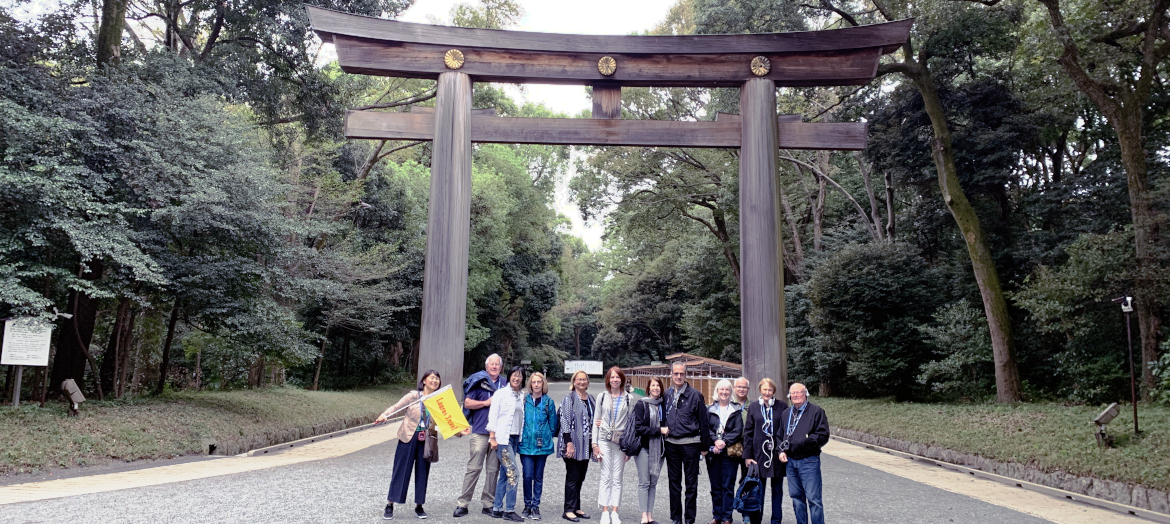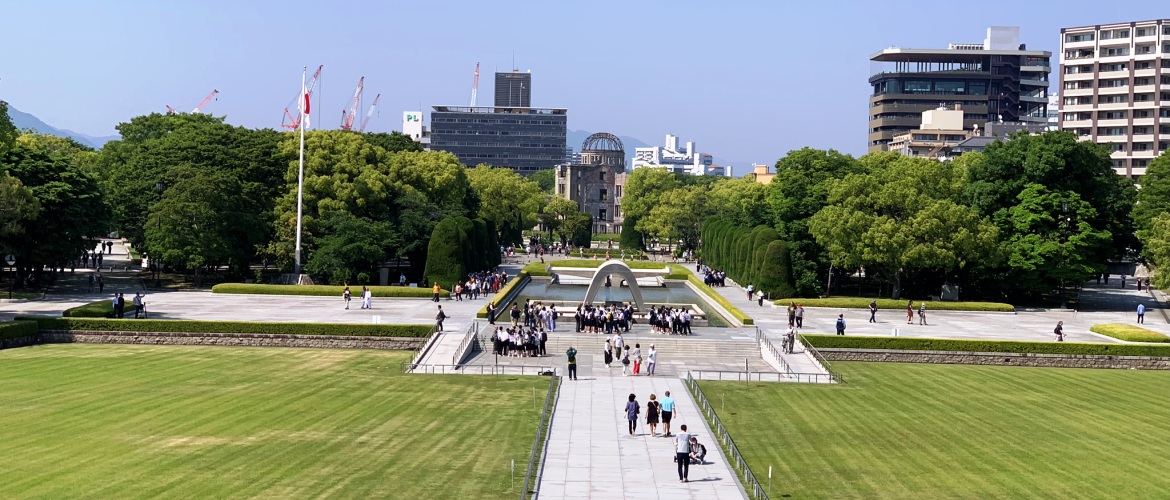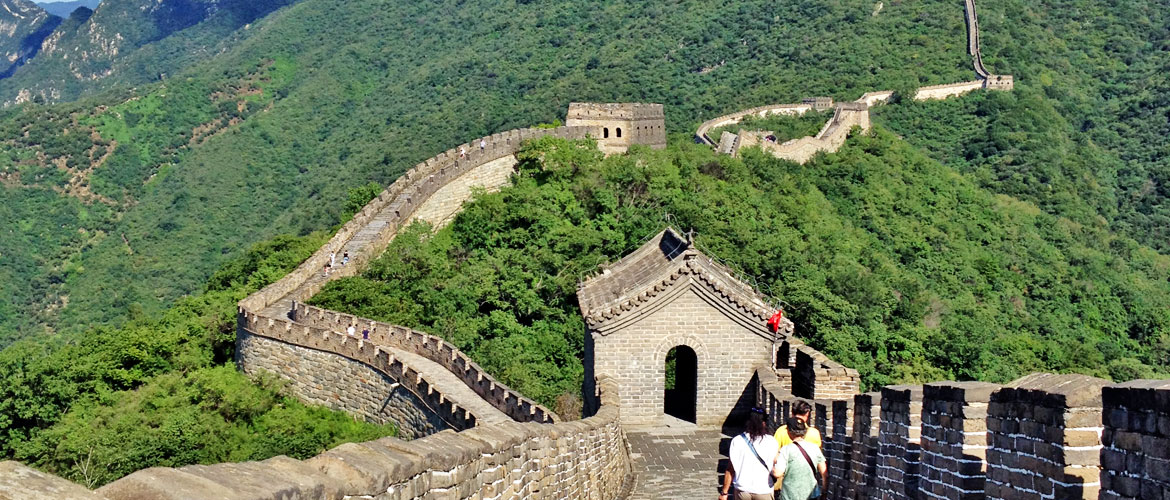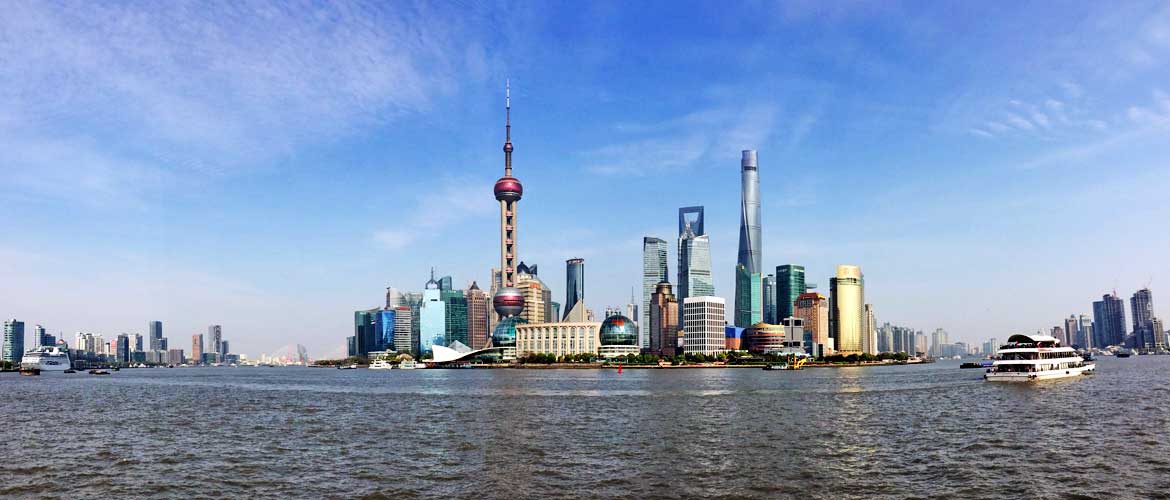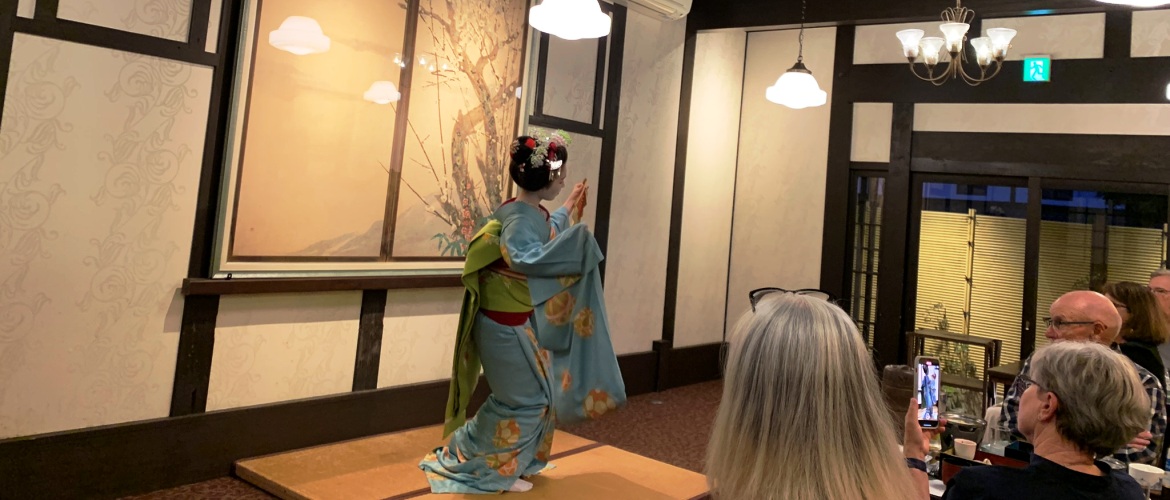Tokyo – Kyoto – Nara – Osaka – Miyajima – Hiroshima – Beijing – Xi’an – Shanghai
This meticulously crafted adventure is not merely a tour; it is an odyssey that invites you to discover the profound beauty and cultural treasures that have shaped these nations for centuries. From the serene gardens of Kyoto to the dynamic cityscapes of Shanghai, each destination is a chapter in the epic story of Asia’s past, present, and future.
As you traverse the historic landmarks, savor the culinary delights, and engage with the warm hospitality of the locals, you’ll find yourself not just a traveler but a participant in a cultural symphony. Let the ancient temples whisper their secrets, the bustling markets share their vibrant tales, and the breathtaking landscapes ignite your imagination.
Join us on this expedition, where every day is a revelation, and every moment is an opportunity to forge connections with the soul of Japan and China. Uncover the magic of diverse traditions, architectural wonders, and the harmonious blend of old and new that defines these incredible nations. Get ready to be inspired, enlightened, and transformed as you embark on this extraordinary journey with Laurus Travel.
Important Features
- Small group size – 20 maximum
- Experienced professional guides
- No annoying shopping stops
- Authentic local cuisine
- Sushi making experience
- Kaiseki dinner with geisha dance performance
- Immersive cultural activities
Meal Code: B = breakfast / L = lunch / D = dinner
Day 1/Thu: Departing Home City
The journey begins with your transpacific flight departing from a city of your choice. You’ll lose a day upon crossing the International Date Line.
Day 2/Fri: Arrival in Tokyo
Welcome to Tokyo!
Please make your way to the hotel on your own. Detailed up-to-date information on how to get to the hotel will be provided in the pre-trip update two weeks before departure.
Private transfer can be arranged on request.
Day 3/Sat: Tokyo (B/L)
Tokyo, literally meaning “eastern capital” and officially named Tokyo Metropolis, is one of the most populous mega-cities in the world with a population of 14 million. Formerly known as Edo, the city has been the de facto seat of the Japanese government since 1603 when shogun Tokugawa Ieyasu chose the city for his headquarters. The shogun (general) was a hereditary commander ceremoniously appointed by the emperor but held real power over the country during the shogunate period between 1192 and 1867. Edo was renamed Tokyo after Emperor Meiji moved his seat from Kyoto in 1868 when the last shogun was forced to return power to the imperial court. The city covers an area of 2,187 square kilometres following the merger in 1943 of the city of Tokyo and Tokyo Prefecture.
Our full-day sightseeing begins at Senso-ji, the oldest Buddhist temple in Tokyo dating back to 628.
We then drive through ritzy Ginza shopping district to arrive at the plaza in front of the Imperial Palace (the palace itself is closed to tourists) for a stroll.
After lunch, we tour the grounds of the tranquil Meiji Jingu, a Shinto shrine dedicated to Emperor Meiji (1852 -1912) and his wife.
We end the day with a visit to the observation deck inside the Tokyo Metropolitan Government Building in Shinjuku. On a clear day, the visitor should be able to see Mount Fuji located 84km to the west.
Day 4/Sun: Tokyo (B)
Free day to explore on your own.
We highly recommend Ginza and Akihabara shopping districts, which even non-shoppers would find exciting. Also recommended are the top-rated Tokyo National Museum and The National Museum of Western Art – both located at Ueno Park, one of Tokyo’s most popular locations for cherry blossom every spring.
Be sure to carry your passport on you as merchandise purchase over 5,000 yen qualifies for sales tax-exemption at many stores and you must show your passport to claim it. If you are over 70 and want to enter Tokyo National Museum for free, you must present a valid ID (passport).
Day 5/Mon: Tokyo – Kyoto (B/L)
This morning we ride the Shinkansen bullet train (Nozomi #65, 09:48/12:00) to Kyoto.
After lunch, we tour the historical Nijo Castle. This is the site that witnessed the commencement and ending of the Tokugawa shogunate (1600 -1868).
We then explore the famous Kinkaku-ji (Temple of Golden Pavilion). This is a Zen Buddhist temple and one of 17 locations comprising the Historic Monuments of Ancient Kyoto World Heritage Site.
Day 6/Tue: Kyoto (B/D)
Nicknamed “City of Ten Thousand Shrines”, Kyoto (literal translation: capital city) served as Japan’s capital for more than one thousand years before the imperial court moved to Tokyo in 1868 with the onset of the Meiji Restoration (1868 to 1912, a historical period associated with the emergence of Japan as a modernized nation). Kyoto is a scaled replica of the Chinese Tang Dynasty’s capital Chang’an, present-day Xi’an. The Tang Dynasty (618 – 907) was a golden era in Chinese history and a time when Japanese adoption of Chinese culture reached its peak. Kyoto today, with a population of 1.5 million, forms a major part of the Kyoto-Osaka-Kobe metropolitan area.
Morning sightseeing at Arashiyama (Storm Mountain) area takes in Tenryu-ji Temple and the Bamboo Forest. Located on the western outskirts of Kyoto, Arashiyama is famous for its immense natural beauty as well as its historical and cultural prominence due to the large number of well-preserved ancient Buddhist temples.
We spend the rest of the day touring the sprawling complex of Kiyomizu-dera and the famous geisha district, Gion, nearby.
Kiyomizu-dera is a Buddhist temple and part of the Historic Monuments of Ancient Kyoto UNESCO World Heritage site. Its veranda provides stunning views of the city.
Today’s traditional multi-course dinner (kaiseki) features performance by a maiko (geisha trainee).
Day 7/Wed: Kyoto – Nara – Osaka – Kyoto (B/L)
We depart for Nara at 08:00. The 45km drive to the magnificent Todai-ji temple takes about an hour. This ancient Buddhist temple is well-known not only for its splendid architecture and the huge bronze statue of the Buddha in the main hall but also for the 1,200 wild deer roaming freely on the grounds of the temple.
Nara is the capital city of Nara Prefecture and a former capital of Japan (710 – 794). With a population of roughly 370,000 and an area of 280 square kilometres, the city occupies the northern part of Nara Prefecture. Eight temples, shrines and ruins together with Kasugayama Primeval Forest collectively form “The Historic Monuments of Ancient Nara” – a UNESCO World Heritage Site.
Afterwards we continue on to Osaka, where we visit the historic Osaka Castle and Osaka’s legendary shopping and entertainment district known as Dotonbori. Situated at the mouth of the Yodo River on Osaka Bay, Osaka is Japan’s third most populous city (after Tokyo and Yokohama) and plays a significant role in Japanese economy. Osaka was once known as the “nation’s kitchen” because of its function as Japan’s rice trading centre during the Edo period.
We should be back at the hotel in Kyoto around 5:00 PM.
Day 8/Thu: Kyoto – Hiroshima (B)
Enjoy some well-deserved downtime this morning. Our rail journey to Hiroshima takes 1 hour 41 minutes (Nozomi #21, 11:46/13:27). Be sure to pack some snacks for lunch on the train.
After dropping off luggage at the hotel, we go on a leisurely outing to Miyajima Island. Officially known as Itsukushima, Miyajima is a small island (30 square kilometres, population 1,760) in Hiroshima Bay known for its forests and ancient temples. The seaside Itsukushima Shinto Shrine on the island is a UNESCO World Heritage Site and the “floating” torii gate in front of the shrine is the main reason for most visitors to come here.
The modes of transportation for the outing include local commuter train, ferry and taxi.
Day 9/Fri: Hiroshima – Beijing (B)
Hiroshima, literally meaning ‘broad island’, is the capital of Hiroshima Prefecture and the largest city in the Chugoku region with a population of 1.2 million. Hiroshima is best known as the first city in history to be targeted by a nuclear weapon when the United States Army Air Forces dropped an atomic bomb on the city (and later on Nagasaki) at 8:15 a.m. on August 6, 1945, near the end of World War II. The highlight in Hiroshima, understandably but sadly, is the Peace Memorial Park which includes the Peace Memorial Museum, and the Atomic Bomb Dome that once served as the industrial promotion hall of the local prefect.
Morning sightseeing at the Peace Memorial Park complex includes 2 hours in the indoor museum onsite.
We check out of the hotel at 11:00 and travel by bullet train to Fukuoka or Osaka for late afternoon flight to Beijing. Meet the driver on arrival for your private transfer to the hotel.
Day 10/Sat: Beijing (B/L/D)
The capital of China, Beijing is a world-class cultural and educational centre with a population of 21.9 million (2020), ranking it China’s second largest city behind Shanghai. Beijing is renowned for its opulent palaces, temples, and huge stone walls and gates – treasures that make it the most popular tourist city in China by the number of visitors it receives every year.
We begin today with a visit to the Forbidden City. Officially known as the Palace Museum, the Forbidden City was the place where the emperors of the Ming (1368-1644) and Qing (1644-1912) dynasties lived and carried out their administration. Construction of the Forbidden City took 14 years (1406-1420) to complete. The complex consists of 980 buildings and covers 72 hectares or 180 acres. It exemplifies traditional Chinese palatial architecture and has influenced cultural and architectural developments in East Asia and elsewhere. Though the Qing Dynasty was overthrown in 1912, the royal family was allowed to continue to live in the Forbidden City till 1924, when the last emperor, Pu Yi, was driven out of the imperial palace. One year later the Forbidden City was turned into a museum. Declared a World Heritage Site by UNESCO in 1987, this is the largest collection of preserved ancient wooden structures in the world.
Next up is Tian’anmen Square. Located in the heart of Beijing, the square measures 880 metres from north to south and 500 meters from east to west. Said to be the largest public plaza in the world, Tian’anmen Square has the capacity to hold one million people. The imposing Tian’anmen Tower sits at the north end of the square while the Monument to the People’s Heroes dominates the centre. The square is flanked by The Great Hall of the People (west) and the National Museum (east). Chairman Mao’s Mausoleum and Qianmen (Front Gate) are located in the south of the square. One of the top 16 tourist attractions in Beijing, Tian’anmen Square is also the witness of the Chinese people’s great struggles for democracy and personal freedom since 1919.
Afternoon sightseeing takes place at the Temple of Heaven, another UNESCO World Heritage Site. Situated in southeastern Beijing, the Temple of Heaven is China’s largest extant sacrificial temple where, during the Ming and Qing Dynasties, the emperors conducted the elaborate and most exalted sacrifices addressed to “the Supreme Ruler of the Universe.” Construction of the temple started in 1406, during the reign of the Ming Emperor Yongle, and took 14 years to complete. The temple was expanded under the Qing emperors Qianlong (1736-1796) and Jiaqing (1796-1820). Occupying 2.73 square kilometres (roughly 1,700 by 1,600 metres), the area of the Temple of Heaven is more than twice that of the Forbidden City.
The famous Hongqiao Pearl Market, the largest pearl market in the world, is right across the street from the Temple of Heaven. Recommended by numerous guidebooks for freshwater pearls, Hongqiao teems with domestic and international shoppers. If you are interested, please ask the guide to drop you off there. However, you’ll need to get back to the hotel by taxi, which costs about 8 US dollars.
Today we enjoy a delicious dinner at a popular Peking Roast Duck restaurant. Peking Roast Duck is a famous Beijing dish prized for the thin and crispy skin with authentic versions serving mostly the skin and little meat, sliced in front of the diners. The meat is wrapped in a thin layer of pancake (Chinese tortilla) together with shredded scallion, cucumber, and a sweet and salty sauce made of wheat flour. Condiments may also include pickled garlic and white sugar.
Day 11/Sun: Beijing (B/L)
After an early breakfast we embark on a full-day excursion to the legendary Great Wall at Mutianyu, 75 km northeast of the city.
Zigzagging over 6,000 kilometres from east to west along the undulating mountains, the Great Wall was built to hold off tribal invaders from the north. As history shows, the Wall failed the Chinese rulers miserably, especially in the case of Kublai Khan who and his men swept across China from the Mongolian steppe, thus the beginning of the Yuan Dynasty (1279-1368).
Construction of the earliest sections of the Wall started in the 7th century BCE. A major renovation started with the founding of the Ming Dynasty in 1368 and took 200 years to complete. The wall we see today in Beijing is almost exactly the result of this effort.
Day 12/Mon: Beijing – Xi’an (B/L/D)
We begin our sightseeing today with a visit to a traditional hutong neighbourhood. Hutong refers to an ancient alleyway with siheyuan or ”4-sided courtyard house” on both sides. The name hutong dates back to the Yuan Dynasty (1279 – 1368 CE). According to some experts, the word originated from the Mongolian language, in which it is pronounced as hottog and means “well.” In ancient times, people tended to gather and live around wells. So the original meaning of hutong should be “a place where people live around”.
Next on our schedule is the Summer Palace, a well preserved UNESCO World Cultural Heritage Site. The imperial resort was first named Garden of Clear Ripples, which was burnt down by the allied forces of Great Britain and France in 1860 at the end of the Second Opium War (referred to as Arrow War by the British). Reconstruction started 25 years later and was completed in 1895 when the name was changed to Yi He Yuan (Garden of Good Health and Harmony). The design gives prominence to Longevity Hill, as well as Kunming Lake south of the hill. The sprawling complex covers an area of 290 hectares and the buildings inside consist of over 3,000 bays.
We travel to Xian by high-speed train (#G87, 14:00/18:23). The 4-hour-23-minute rail journey through fertile farmland dotted with villages provides the visitor with an excellent way to enjoy the beautiful countryside. The track we travel on between Beijing and Zhengzhou is part of the new 2,298 km high-speed railway linking Beijing and subtropical Guangzhou and is also the longest high-speed rail line in the world. In the past 20 years China has been on a building spree expanding the country’s rail network and upgrading existing railways. Its new high-speed rail service rivals France’s TGV and Japan’s “shinkansen” in terms of safety, speed, comfort and punctuality.
Day 13/Tue: Xi’an (B/L)
With a history going back over 3,000 years, Xi’an served as China’s capital of several ruling dynasties including the Han (206 BCE – 220 CE) and the Tang (618 – 907). It is home to the famous Terracotta Army and the eastern terminus of the ancient Silk Road – a network of trade routes connecting China proper with regions as far as the Mediterranean beginning in the Second Century BCE.
We spend the morning visiting the Terracotta Army. Built on the excavation site, the museum is located 30 km east of the city. Designed to follow the first emperor of the Qin Dynasty (221-206 BCE) into eternity, the Terracotta Army represents one of the greatest archeological discoveries of the 20th century.
After lunch we return to the city for a stroll on the ancient city wall. Declared a national treasure by the State Council in 1961, the wall (first built in 1370) encircles an area of 14 square kilometres. It runs 13.7 kilometres long and measures 12 metres in height with a thickness at the base between 15 to 18 metres.
Day 14/Wed: Xi’an (B/L)
Morning sightseeing begins at Shaanxi Provincial Museum. The modern, well-organized museum was completed in 1992 and traces the history of Xian from prehistory to Qing dynasty (1644-1912). The extensive galleries and exhibitions offer the visitor an excellent introduction to the area that greatly improves understanding of the numerous historical sites in and around the city.
We then visit the grand mosque in the old town centre and the adjacent Muslim bazaar. The mosque was established in the 8th Century but the majority of the complex was constructed in the Ming Dynasty (1368-1644). It was further expanded in the Qing Dynasty (1644-1912). Unlike most mosques in Middle Eastern or Arab countries, this mosque is completely Chinese in architectural style. It has neither domes nor traditional minarets.
Day 15/Thu: Xi’an – Shanghai (B)
Today we travel to Shanghai by high-speed train (#G362, 08:49/14:45, 1,509 km). Meet your guide and transfer to hotel upon arrival.
With a population of 24.9 million (2021), Shanghai is China’s largest city, which delights the visitor with its futuristic skyline and historical landmarks. As China’s leading gateway to the world, Shanghai plays a prominent global role as a hub of commerce, finance, cultural exchange, fashion, technology and transport.
Day 16/Fri: Shanghai (B)
Free day to explore on your own. We recommend Shanghai Museum and the Urban Planning Exhibition Center nearby. Shanghai Museum, a great place to explore on your own, is frequently cited by visitors as one of the best of its kind in China with a huge collection of precious national treasures.
Optional Suzhou Day Tour
After a leisurely breakfast we ride the high-speed train (30-40 minutes) to Suzhou, an ancient city most famous for its gardens, canals and silk industry. In late 13th Century a Venetian named Marco Polo visited Suzhou and he was very impressed by what he saw. He vividly described the prosperous silk making trade and dubbed Suzhou “Venice of the East” due to the small waterways crisscrossing the city.
Our full-day schedule takes in historic Tiger Hill, Humble Administrator’s Garden, Suzhou Museum (designed by I.M. Pei), North Pagoda and a short canal cruise. We return to Shanghai by high-speed train (30-40 minutes) in early evening.
The all-inclusive price with hot lunch starts from US$225 per person subject to a minimum of 2 participants.
Day 17/Sat: Shanghai (B/L/D)
We begin our day with a visit to Jade Buddha Temple located in an old neighbourhood. Later on we tour the famous waterfront promenade known as the Bund, which is followed by the Yu Garden in the old town centre. We wrap up the day with a drive through the glitzy financial district of Lujiazui on the opposite side of the Bund across Huangpu River.
Day 18/Sun: Returning Home (B)
The incredible journey ends this morning. Transfer to the airport any time for return flight. Guests flying back to North America will regain a day upon crossing the International Date Line, thus arriving home the same day as departing from Shanghai.

| City | Nights | Hotel | Category |
| Tokyo | 3 | Tokyo Dome Hotel or similar | first class/4 stars |
| Kyoto | 3 | ANA Crowne Plaza Kyoto or similar | first class/4 stars |
| Hiroshima | 1 | ANA Crowne Plaza Hiroshima | first class/4 stars |
| Beijing | 3 | New Otani Chang Fu Gong or similar | luxury/5 stars |
| Xi’an | 3 | Sheraton North City or similar | luxury/5 stars |
| Shanghai | 3 | Sheraton Shanghai Hongkou or similar | luxury/5 stars |
* The hotels listed are subject to change without notice.
|
Dates and Prices
Prices are per person based on double occupancy. Early bird and group booking discounts available.
| Depart | Return | Land Only* | Single Supplement |
| (Thu) | (Sun) | CA$/US$ | CA$/US$ |
| 2024 | |||
| 04-Apr | 21-Apr | $10,780/$7,985 | $2,690/$1,990 |
| 23-May | 09-Jun | $10,780/$7,985 | $2,690/$1,990 |
| 15-Aug | 01-Sep | $10,780/$7,985 | $2,690/$1,990 |
| 03-Oct | 20-Oct | $10,780/$7,985 | $2,690/$1,990 |
| 17-Oct | 03-Nov | $10,780/$7,985 | $2,690/$1,990 |
| 24-Oct | 10-Nov | $10,780/$7,985 | $2,690/$1,990 |
| 31-Oct | 17-Nov | $10,780/$7,985 | $2,690/$1,990 |
| contact us for dates beyond 2024 | |||
* Land Only price does not include international air. Contact us for a fare quote.
|
Tour price includes:
|
Tour price does NOT include:
See Terms & Conditions for more information. |
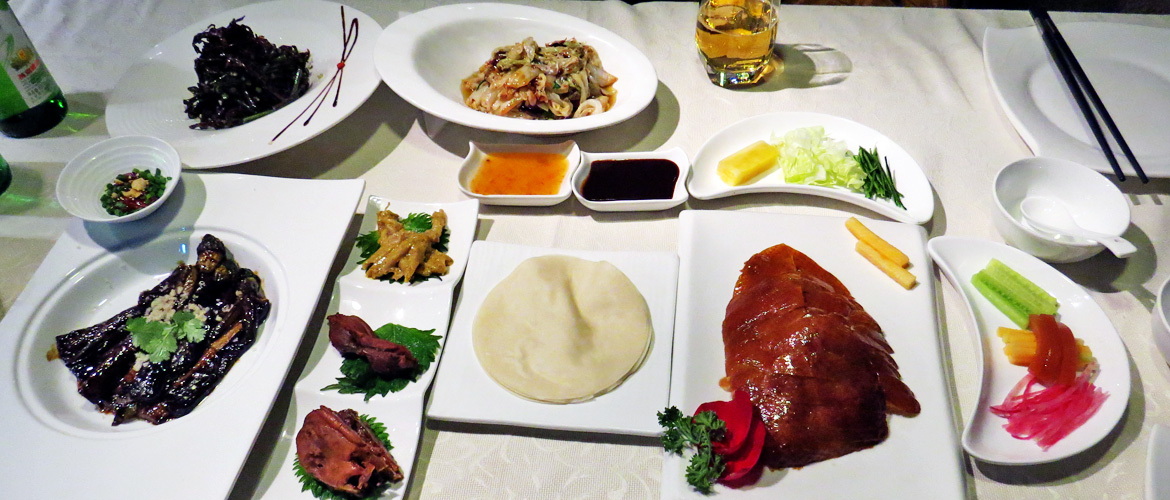
Passport & Visa
Your passport needs to have at least two blank visa pages and six months validity at the end of the tour.
You may not need a visa to enter Japan but it is mostly you’ll need one to enter China. Detailed advice will be provided once we know of your nationality upon receipt of your reservation details.
Immunization
Proof of vaccination against COVID-19 may be required. We will update you on this around your balance due date.
No certificate of any other inoculation is required. If necessary, check with your family doctor or a travel medicine clinic to determine what precautions you should take. We recommend vaccination against hepatitis A and suggest that you check out advice provided by the Health Canada and the US CDC.
Travel Insurance – When to Buy
Your deposit will be kept as credit if you cancel for any reason. The transferrable credit has no expiration date. Therefore, it may be unnecessary to spend $30 to $50 on cancellation insurance just to protect the deposit.
However, purchase of trip cancellation & emergency medical insurance is strongly advised when your balance is due. If you don’t have proper coverage, the loss can be devastating in case of cancellation before or after commencement of the booked trip or in case of a serious medical emergency during the trip. Please ask us premium quotes when your balance due date is near.
